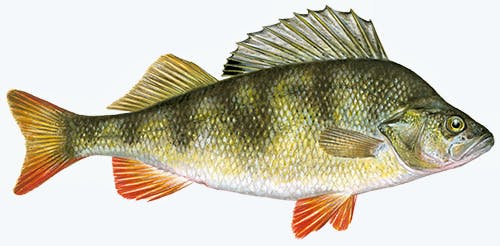High-Protein Diet: Perch require a diet with
40-50% protein, particularly during early growth stages. Protein sources include fish meal, insect meal, and plant-based alternatives such as soybean meal.
Fat and Energy Needs: A diet containing 10-20% fat ensures proper growth and energy metabolism. Essential fatty acids like omega-3 and omega-6 are important for health.
Natural vs. Formulated Feed: In natural waters, perch are carnivorous, feeding on small fish, crustaceans, and insects. In aquaculture, they are fed formulated sinking or floating pellets designed for carnivorous species.
Nutrient Requirements: Perch need a balanced diet with vitamins (A, D, B-complex) and minerals (calcium, phosphorus, selenium) to support immune function and bone development.

Perch
Perch refers to several species of freshwater fish, with European perch (Perca fluviatilis) and yellow perch (Perca flavescens) being the most commonly farmed. European perch is widespread across Europe and Asia, while yellow perch is native to North America. Both species are highly valued for their firm, white flesh and are farmed for food production and restocking in natural waters.
Feed programs
Configure the parameters below and download the data sheets you need for your species.Configurate parameters
Choose one or multiple feed sizes below
Choose a feed format below
Download data sheets
PerformanceGoodHigher